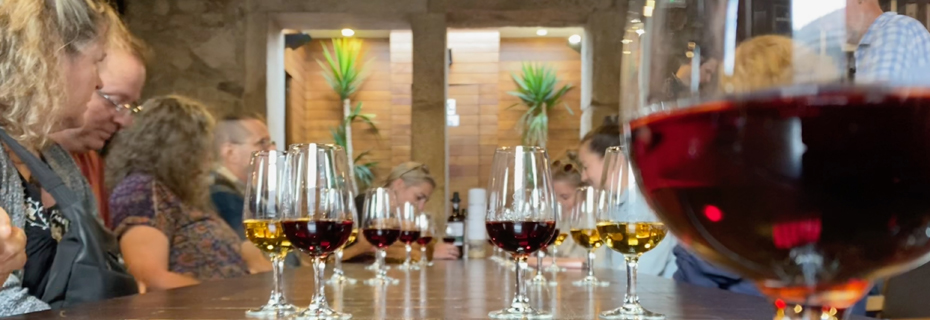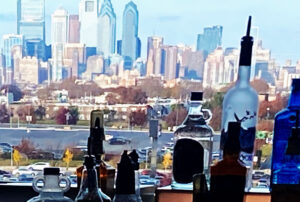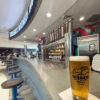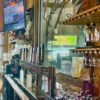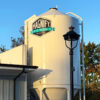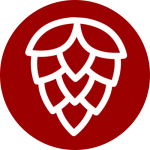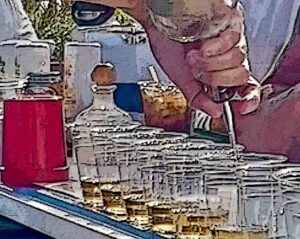 This entry is a bit of a departure from a normal Beer Appreciation blog post, a more in depth exploration of the culture and history of drinking, but I hope you find it interesting, thought provoking… and more importantly entertaining.
This entry is a bit of a departure from a normal Beer Appreciation blog post, a more in depth exploration of the culture and history of drinking, but I hope you find it interesting, thought provoking… and more importantly entertaining.
Even Back in the Stone Age “Everybody Must Get Stoned…”
University of Pennsylvania Professor and archaeologist Patrick McGovern, who famously challenged the brewers of the DogFish Brewery in Delaware to recreate ancient beer recipes like “Midas Touch”, once remarked that prehistoric alcoholic drinks helped make humankind unique. “Fermented Beverages are at the center of religions all over the world. Alcohol makes us who we are in a lot of ways…It opened our minds to other possibilities”.
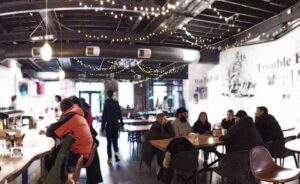 While it has been long known that animals will on occasion binge on rotting fermented fruit – like monkeys who fall out of trees and elephants that go on a drunken rampage, it is the combination of the human brain and the mind altering impact of alcohol that Professor McGovern suggests has had an impact on civilization. For good and sometimes for bad, but is intoxication a part of what it means to be “Human”?
While it has been long known that animals will on occasion binge on rotting fermented fruit – like monkeys who fall out of trees and elephants that go on a drunken rampage, it is the combination of the human brain and the mind altering impact of alcohol that Professor McGovern suggests has had an impact on civilization. For good and sometimes for bad, but is intoxication a part of what it means to be “Human”?
Drinking has been the main pathway to “see God” in most all societies – no matter how pious, the only known exception being the American Indians, who used tobacco and mushrooms to connect to their Gods instead.
So if finding an alcohol buzz started accidentally with naturally fermented fruits and honey happened upon by fortunate prehistoric humans – how and why did that lead us to the current cultural norms of drinking beer, wine and distilled spirits? And, are the impact of all types of alcoholic drinks interchangeable – with just the level of alcohol making the difference? Does one or the other type of drink make us more “Human”?
Alcoholic Drinks Made from What’s Around
 Archaeologists and scientists have proven that early human societies made their first alcoholic drinks from plants and fruits that were simply easiest to find on hand. The only common trait between these locally derived alcoholic drinks was that they were based on some natural substance that contained sugar or starches (which would be easily converted to sugar).
Archaeologists and scientists have proven that early human societies made their first alcoholic drinks from plants and fruits that were simply easiest to find on hand. The only common trait between these locally derived alcoholic drinks was that they were based on some natural substance that contained sugar or starches (which would be easily converted to sugar).
Understandably, in the warmer regions fruits like grapes were plentiful, and easily induced to ferment and then create wine. In the northern regions tree fruits like apples and even bee honey were commonly available and could be simply converted into magically dizzying potions. With a little more work, grains like barley and wheat can also become a potent brew.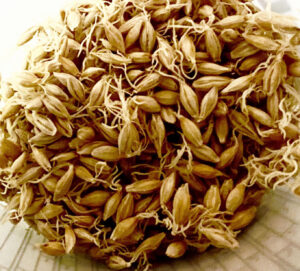
It is said that the agricultural revolution circa 10,000 BC really started to enable early humans to make rudimentary beer. There are plenty of stories about how ancient civilizations established grain farms – not for bread, but to cultivate to make beer. Apparently the Egyptians were prolific grain farmers with some 60% of it used by them to make beer.
According to an article from the British Museum “In ancient Egypt, beer was so essential it was treated principally as a type of food – it was consumed daily and in great quantities at religious festivals and celebrations. Beer was an essential for laborers, like those who built the pyramids of Giza, who were provided with a daily ration of 1⅓ gallons…”
Once these locally based alcohol infused drinks were established, just leave it to the ingenuity of humankind to refine, improve and create industry out of their alcoholic creations. And leave it to humans to find a number of ways to use these drinks to try to make them feel better.
Different Styles of Drinks Evolve
Distilled spirits supposedly developed as a byproduct of “alchemy” – the search for a way to purify, mature, and perfect certain natural materials, including metals, stones, and foods. The ancient practice started in the first century AD (relatively new compared to the origins of wines and beers thousands of years earlier). The alchemists believed that all matter contained an essence, or “spirit,” that could be extracted through distillation. So, it was only natural that at one point they would distill wine and other alcoholic drinks, and presto – you’ve got some really potent stuff from 50% and up to 100% alcohol by volume (“ABV”) called “sprits”.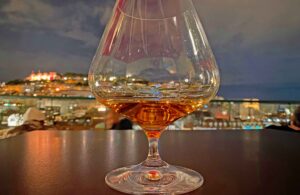
Wine packs a less intense alcoholic punch than distilled liquor, typically in the range of 12 – 15% ABV. Wine was the drink of choice in southern Europe – though typically not the alcoholic drink “of the average people”. Wine was expensive to make, store and transport. Not many of the “common people” drank wine until well into the 1600’s as Europeans expanded – taking with them their wines across the globe.
In fact, some believe that at the biblical “Last Supper” they would probably have been drinking beer, not wine – as the Disciples were clearly not from the upper classes. And, apparently the Aramaic scriptures don’t really name the liquid directly.
Beer on the other hand developed as the alcoholic drink of the average people, as it was cheaper to make in large quantities, could be made from just about any fermentable starch, and had some nutritional value. At anywhere from 2% to 8% ABV, beer was easier to drink in volumes, with the alcoholic effect building more slowly over time (and with repeated application!). 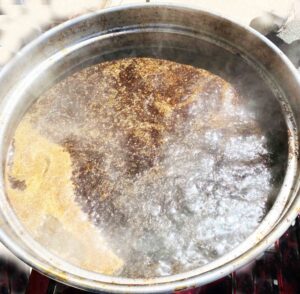
In medieval times, for the common person, beer was a part of the daily diet – and was clearly safer to consume than plain water. Daily beer was typically brewed by the women of the family as part of managing the household, and diluted to different strengths depending on it’s use. The lightest of all was the household table beer, barely alcoholic – and served at most meals to the entire family. The stronger stuff was reserved for the adults, with the highest ABV brews reserved for guests and festivals.
At the time no one knew why drinking beer kept people from getting sick – but even the Church shared their beer with the common folk as an act of charity. Of course we know now that it was the boiling of the water to make the beer killed most of the common bacteria that caused frequent and often deadly illnesses of the Middle Ages.
Diversity of Drinking Habits Today
There have never been as many different easily obtained forms of alcoholic beverages than available to people today. Even in the 1980’s and 1990’s there was a pretty well established pattern of what alcoholic drinks people preferred – young drinkers starting out with beer (primarily guys) and wine (primarily gals) and eventually converting over to more expensive wines and then finally spirits (cocktails and liquors) as drinkers and their tastes matured. Beer – being cheaper and typically lower in alcohol then wine or liquor was the most popular intoxicating drink in general, followed by wine and then sprits.
According to the Gallup Poll, in 1990 about 47% of those who drank preferred beer, 27% wine and 22% spirits. But the times and tastes are certainly changing. In 2024, wine and beer are essentially tied – noted as preferred by 33% each and liquor is up to about 30%. 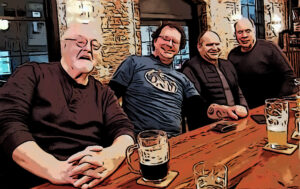
In 2024 men still chose beer as the preferred alcoholic drink at 54% (vs. women at just 17%) and women still preferred wine at 47% vs. men at 16%. The statistics say that women also prefer liquor somewhat more than men (33% vs. 26% for men.) Age also matters as those 55 and older drink a bit less beer, significantly more wine and a bit less liquor on average.
Today, from a diversity aspect, you simply have more easily accessible choices on how you want to consume your alcohol than ever before, and the where and when you want to consume it. In the 1960’s if you had told someone you’d be sipping wine in a grocery store or drinking a beer while having your hair cut, they’d think you were crazy (or you might have already been drinking for a while). These so called “Third Spaces” (not home or out at a bar/restaurant) are the fastest growing location choices for alcoholic drinking.
Gender Bias – “Women Don’t Like Beer?”
I have often wondered by women so widely distain drinking beer – and I believe that there is more at play than just tradition. Many of the “boomers” and those from earlier generations were brought up to believe that drinking beer was not “lady-like” and what’s worse, drinking beer made you fat. 
Well, it’s true that wine and liquor are made without grains (or in the case of distilled spirits their starches eliminated), so wine and sprits have no carbohydrates – while beer does. But, from a calorie standpoint there is not so much of a difference. A 12-ounce glass of beer has about 150 calories, a 5-ounce glass of red wine has about 125 calories, and a 1.5 ounce shot of gin, rum, vodka, whiskey or tequila has about 100 calories. So, what’s different is mostly in the quantity of liquid, not the amount of calories or alcohol content.
How often have you heard a female friend say “Beer fills me up” or “I can’t drink more than one beer”. This is very logical – as 5 ounces of wine is less than 1/2 of the liquid in a 12 can of beer and 2 ounces of Vodka is obviously even less. So, aren’t we really talking about how much liquid you need to consume to get the effect of the alcohol, not the qualities of the drink itself? (Once again, women figured out “less filling, works great” before men did!)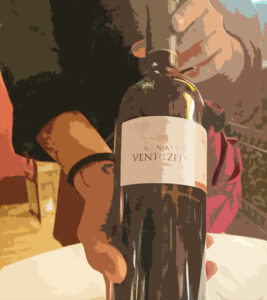
The other contributing factor about beer “filling you up” is the carbonation – which also can make you feel full – and in quantities it can cause bloating and give you gas (which is still considered to be “Un-ladylike” in most situations). Typically, carbonation in moderation has no significant impact on the drinker other than the mouthfeel.Those bubbles, while usually tolerable to wine drinkers when consumed in Champagne or Prosecco in typical 5 oz portions, are not so well tolerated in 12 ounce or more beer sized servings.
Can Drinking Beer, Wine or Spirits Create Different Effects?
This is an interesting question as it is complicated by a number of circumstances and factors including drinking in social situations or alone, how long you are drinking, your mood at the time, and if you mix in other beverages and foods at the same time. All of these types of activities can be considered to be part of activities of being a “human” and have an impact on the perception of intoxication.
Lets simplify things to a stereo-typical scenario – a bunch of guys getting together for drinks are more likely to be engaged in a longer time length activity (working together on a project, watching spectator sports, or out traveling). Conversely, women often drink primarily with a meal or during conversational settings with a spouse or friends.
A “manly” televised sporting event (Football, Baseball or Soccer for example) goes on for a few hours. While some men will drink wine or liquor during such events, those drinks are usually mixed with non-alcoholic additions like seltzer, fruit juice or soda. Beer is a just a natural fit for longer drinking periods due to it’s nourishing qualities and generally lower alcohol levels. And face it, there is just more liquid to drink, which – with rare exceptions – takes up more time. The NFL reports that the average sports fan that drinks alcohol, drinks 3.7 beverages during one game, and of those, 75% preferred drinking beer.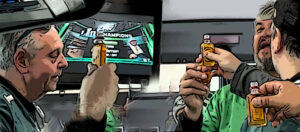
Staying with the stereotypes, women seem to prefer to socialize through conversation or by eating out with their friends. Consuming beer just may take too long to get the alcohol vibe going during an hour long chat or quick meal. Conversely, wine or mixed drinks accelerates the alcohol effect allowing one to “hit the ground running” without dealing with the quantity of liquid and time it takes for a few beers to get the same intoxicating impact. It is a fact that the Irish call drinking lower alcohol Irish Stout beers at the pub a “session” as it’s meant to go on for a good while.
But do people who drink beer vs. wine vs. sprits act differently when intoxicated? Obviously the quantity and time drinking has the most to do with it, It’s pretty simple to do the math – alcohol percentage times the number of ounces consumed. From an alcoholic perspective, two ounces of 50% ABV liquor is the same as 20 ounces of 5% ABV beer, and about 8 oz of 12% wine. You can have three 2 ounce liquor drinks over 3 hours, or five 12 oz beers, or about three 8 oz glasses of wine. The alcohol and it’s effect net out to be the same.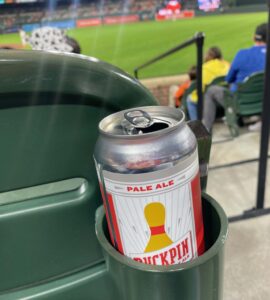
Over a three and a half hour sporting event, drinking 5 beers would be one every 40 or so minutes, while each glass of wine or spirit drink will have to last you about 70 minutes or so to make it through an entire sporting event. But is the way you feel more than just the quotient of the amount of time drinking and ABV of the drink? Slower consumption of lower ABV drinks allows the body more time to metabolize the alcohol, typically resulting in a slower increase in blood alcohol concentration. That method is thought to lead to a feeling of a more mellow intoxication, allowing the drinker to more consciously gauge and moderate their drinking. But there may be more to it than just the method.
Does Drinking Different Styles of Alcohol Make You More Human?
In 2017 researchers from the Public Health Wales National Health System Trust and King’s College London — conducted a study to try to understand what different types of alcohol do to drinker’s emotions. Their study found that in fact certain drinks are likely to be associated with particular emotional states more than others. They surveyed 30,000 people in over 20 different countries to get their opinions.
Spirits, their research says, are more often associated with negative moods, while wines and beer more often elicit a positive responses. Red wine and beer were reported to be the most relaxing drinks, with 53 percent of respondents saying that these drinks boosted feelings of relaxation. Almost 50 percent indicated that beer in particular helped them to wind down from a stressful day. Spirits were reported as much less likely to make one feel relaxed, as only 20 percent of respondents said that distilled drinks helped them to relieve their tension.
 Interestingly, the study also reported that more than half of the respondents said that drinking spirits boosted their confidence and energy levels, and about 42% said that these strong drinks made them feel “sexier”. The researchers also concluded that our emotional state after a shot of spirits may be significantly influenced by the context of the drinking situation, how the drink is advertised, as well as how much alcohol it contains. Spirits more rapidly increase the blood alcohol level creating a different feelings in the brain compared to lower ABV drink consumption.
Interestingly, the study also reported that more than half of the respondents said that drinking spirits boosted their confidence and energy levels, and about 42% said that these strong drinks made them feel “sexier”. The researchers also concluded that our emotional state after a shot of spirits may be significantly influenced by the context of the drinking situation, how the drink is advertised, as well as how much alcohol it contains. Spirits more rapidly increase the blood alcohol level creating a different feelings in the brain compared to lower ABV drink consumption.
But does science really link being intoxicated to being “more human”? Studies have detailed interesting ways in which our perceptions of how we feel drinking alcohol can be swayed by the behavior of those around us. For example being among friends who are drinking more alcohol might lead us to believe we’re more intoxicated than we actually are, and vice versa.
Based on this, the effects we attribute to different types of alcohol may, in fact, be more closely tied to our environment and social context at the time than the drinks are themselves. The expectation of how a certain drink will make us feel, combined with the atmosphere in which we drink it shapes our related feelings and behavior. That context may well be more important to our feelings of well being when drinking than the actual influence of the alcohol by itself.
What Can We Say about the Question of Alcohol’s influence on Humanity?
In 2025 there are new, more intensified efforts to moderate or even prohibit the use of alcohol for all of humankind. Today ties of alcohol to aberrant anti-social behavior, health concerns and divorce are touted by experts and influencers alike. No doubt that the popularity of “garage drinking” during the pandemic and the growing popularity of alternative legal sources of intoxication are contributing to the growing distain for alcohol.
But, humankind are by definition “social animals”, and in most cases drinking alcoholic beverages is a social activity. Based on the premise that one’s social context and mood have a lot to do with how you feel when drinking, and drinking alcohol can change your perceptions of social behavior – maybe it is part of what makes us human after all. 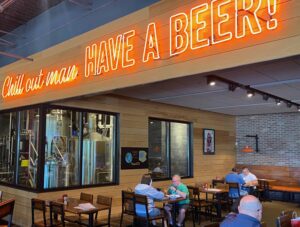
That is not to say that people that don’t drink alcohol are “less social” – but maybe they are less likely to reflect other’s peoples moods in a social contest. Some studies comparing alcohol and placebos have shown that you can feel drunk even if you drink something alcohol-free, as long as you believe that you are drinking something alcoholic.
So, maybe what it all comes down to is – it’s all in your human head. Alcohol can intensify and repress your human feelings, and help you feel more relaxed. It can also intensify bad feelings and be dangerously addictive. As I wrote at the beginning of this paper “it is the combination of the human brain and the mind altering impact of alcohol that proved to have such an impact on civilization. For good and sometimes for bad.”
And maybe that’s is a part of being a human being after all – finding a way to socialize comfortably and open our minds, for the good and for the bad for humankind. It may not be the most important human activity, or even a required one, but it has certainly been a major influence on humankind.


